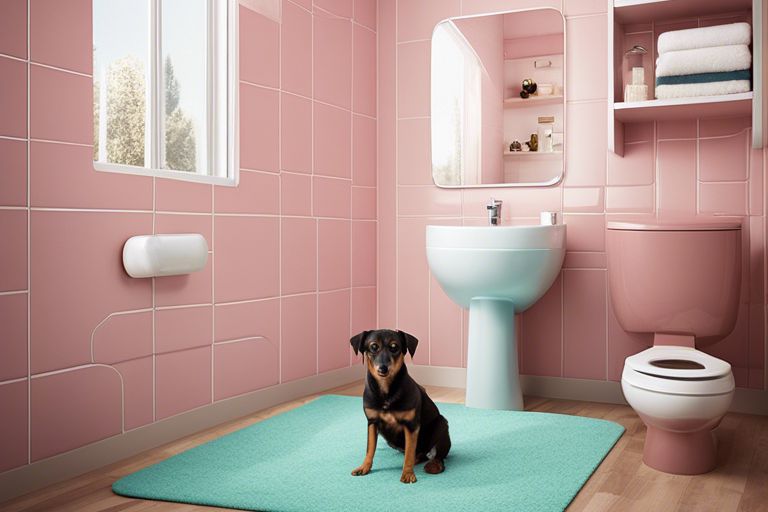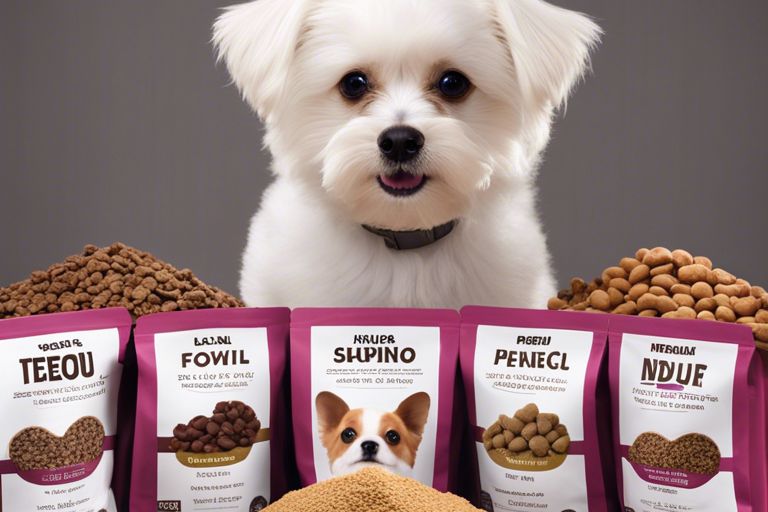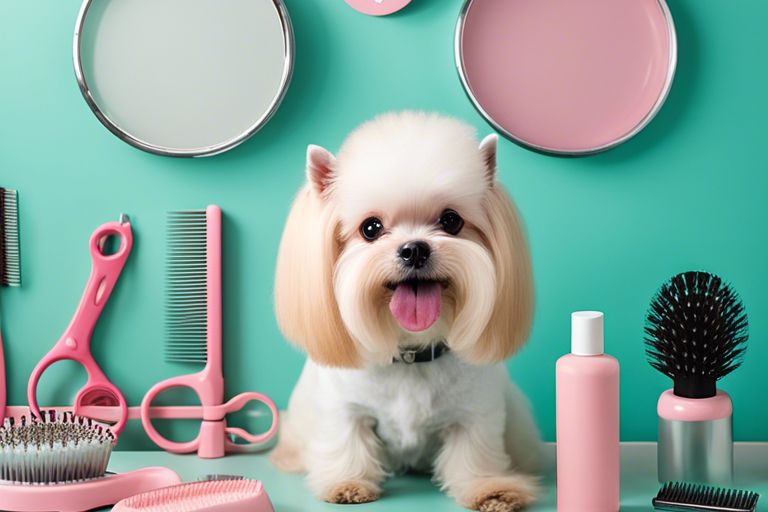As a seasoned dog owner who has successfully potty trained several small dogs in an apartment setting, I understand the challenges and frustrations that can arise during this process. Potty training a dog in an apartment requires patience, consistency, and the right methods to ensure success. In this informative blog post, I will share the best methods that I have found to be effective for small dog potty training in an apartment, as well as tips to avoid common pitfalls. Small dog potty training is not only essential for maintaining a clean living space, but it also contributes to a happy and well-behaved pet. By following the advice in this post, you can create a positive and efficient potty training experience for both you and your furry companion.
Key Takeaways:
- Consistency is Key: Small dog potty training in an apartment requires consistent and frequent bathroom breaks to establish a routine for your pet.
- Use Positive Reinforcement: Reward your small dog with treats and praise when they successfully potty in the designated area to encourage good behavior.
- Choose an Appropriate Potty Area: Set up a designated potty area in your apartment, such as a pee pad or artificial turf, to make it easier for your small dog to understand where they should go.
Preparing for Training
Now that you have decided to potty train your small dog in an apartment, it’s important to prepare for the process. Proper preparation will make the training easier and more effective. In this chapter, I will discuss the key aspects of preparing for small dog potty training in an apartment.
Setting Up a Conducive Environment
When preparing for small dog potty training in an apartment, creating a conducive environment is crucial. Set up a designated potty area for your dog, whether it’s a pee pad, indoor grass patch, or a litter box. Place the potty area in a quiet and easily accessible spot in your apartment. Avoid placing it near your dog’s sleeping and eating areas to minimize the risk of accidents.
Selecting the Right Potty Training Supplies
Selecting the right potty training supplies for your small dog is essential for successful training. Choose supplies that are suitable for the size of your dog and the space in your apartment. If you opt for pee pads, make sure they are the right size for your dog and are absorbent and leak-proof. If using an indoor grass patch or litter box, ensure it is the appropriate size for your dog and is easy to clean. Remember to replace soiled pads or dispose of waste promptly to maintain a clean and hygienic environment for your dog.
I hope this helps you in preparing for small dog potty training in your apartment. In the next chapter, I will discuss the importance of establishing a routine for successful potty training.
Training Techniques
Some of the most effective training techniques for small dog potty training in an apartment include crate training, schedule training for consistency, positive reinforcement strategies, and choosing the appropriate indoor potty options.
Crate Training Explained
When it comes to potty training small dogs, crate training can be highly effective. I recommend using a crate that is just big enough for your dog to stand up, turn around, and lie down comfortably. This will discourage your dog from soiling their living space and encourage them to hold it until taken outside. Remember to take your dog outside immediately after letting them out of the crate to reinforce the idea that potty time is outside.
Schedule Training for Consistency
Creating a schedule for your small dog’s potty breaks is crucial for successful training. I recommend taking your dog out first thing in the morning, after meals, before bedtime, and frequently throughout the day, especially if they are young puppies. Consistency is key in teaching your dog when and where to do their business.
Positive Reinforcement Strategies
Using positive reinforcement is a powerful tool in potty training. When your small dog eliminates outside, I recommend showering them with praise and offering a small treat to create a positive association with going potty in the right place. Remember to be patient and consistent in your praise.
Paper Training vs. Indoor Potty Options
Deciding between paper training and other indoor potty options depends on your living situation. Using potty pads or an indoor grass patch can be convenient for apartment living, while paper training may be suitable for dogs who struggle with using designated potty areas. It’s important to choose the method that works best for your dog and your living environment.
Overcoming Common Challenges
For potty training small dogs in an apartment, there are several common challenges that you may encounter. It’s important to be prepared for these challenges and have a plan in place to address them. Here are some tips for overcoming common obstacles in small dog potty training.
Dealing with Accidents
Accidents are an inevitable part of potty training, especially in the early stages. It’s important to remain patient and consistent when dealing with accidents. When you catch your dog in the act, firmly say “no” and take them outside to finish their business. Clean up the mess thoroughly to eliminate any lingering odors that might attract your dog back to the same spot. It’s crucial to not scold or punish your dog after the fact, as this will only confuse and scare them.
Addressing Separation Anxiety and Its Effects on Potty Training
Separation anxiety can be a common issue in small dogs, and it can pose a challenge to potty training. If your dog becomes anxious when left alone, they may be more prone to accidents in the house. It’s important to address separation anxiety separately from potty training, as the two issues are often closely linked. Creating a comfortable and secure environment for your dog while you’re away, along with slowly desensitizing them to being alone, can help minimize accidents related to separation anxiety.
Adapting Training for Age and Health Issues
Older small dogs or those with health issues may have special needs when it comes to potty training. It’s essential to be sensitive to any physical limitations or medical conditions that may affect your dog’s ability to control their bladder and bowels. Adjust the training approach to accommodate these special circumstances, such as providing more frequent opportunities for bathroom breaks and seeking the advice of a veterinarian if necessary.

Maintaining Progress
After you have successfully potty trained your small dog in your apartment, it’s important to maintain the progress you’ve made. Consistency is key when it comes to solidifying the potty training habits you’ve established. I recommend continuing to use the methods that have been successful for you, while also being patient and understanding with your furry friend as they continue to learn.
One resource that I found helpful for maintaining progress in small dog potty training is the article How to Potty Train a Dog in an Apartment – Furtropolis. This article provides additional tips and insights that can be valuable as you work to maintain the habits you’ve established.
Tracking Your Dog’s Progress
It’s important to track your dog’s progress as you continue with potty training. This can be done by keeping a daily record of successful potty breaks and accidents. By monitoring your small dog’s potty habits, you can identify any patterns or areas for improvement. This will enable you to adjust your training methods accordingly, ensuring that your dog continues to make progress.
Transitioning to Outdoor Potty Training (If Applicable)
If you eventually plan to transition your small dog to outdoor potty training, it’s important to do so gradually. Start by gradually introducing outdoor potty breaks and rewarding your dog for successful outdoor potty experiences. Be prepared for setbacks, as the transition may take time. Remember to be patient and continue using positive reinforcement to encourage your dog to potty outside.
Conclusion: Small Dog Potty Training in an Apartment
With these considerations in mind, it is evident that the best methods for small dog potty training in an apartment involve consistency, positive reinforcement, and the use of appropriate training tools such as pee pads or litter boxes. By establishing a regular potty schedule, rewarding good behavior, and providing proper training aids, you can effectively teach your small dog to do their business indoors. Additionally, it is important to be patient and understanding throughout the training process, as accidents are inevitable. With time and dedication, you can successfully potty train your small dog in an apartment setting.
Small Dog Potty Training in an Apartment FAQ
Q: What are the best methods for small dog potty training in an apartment?
A: The best methods for small dog potty training in an apartment include crate training, establishing a consistent potty schedule, using positive reinforcement, and supervising your dog closely. It’s important to be patient and consistent throughout the training process.
Q: How often should I take my small dog outside to potty during potty training?
A: During potty training, it’s recommended to take your small dog outside to potty at least every 2-3 hours, especially after meals, naps, and playtime. As your dog becomes more accustomed to the routine, you can gradually extend the time between potty breaks.
Q: What should I do if my small dog has an accident inside the apartment during potty training?
A: If your small dog has an accident inside the apartment, it’s important not to scold or punish them. Instead, clean up the mess thoroughly using an enzymatic cleaner to eliminate any lingering scent. Then, refocus on the potty training methods mentioned earlier, and continue to reinforce positive behavior when your dog potties in the appropriate spot.


